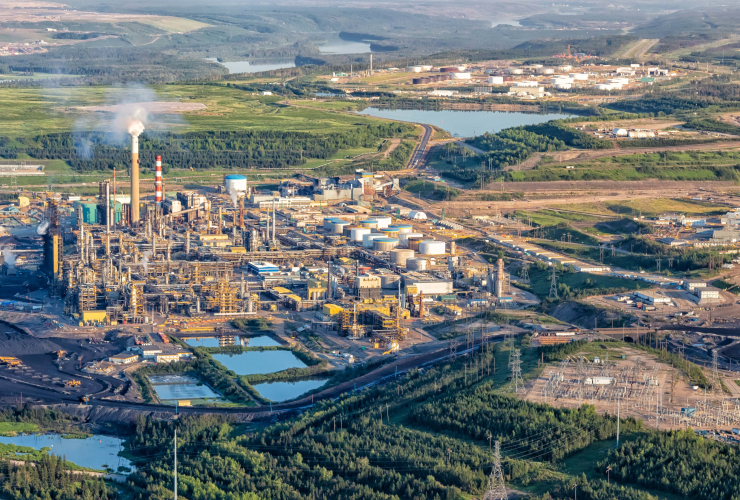Here at COP28, the UN climate conference in Dubai, health is in focus. Me and my fellow medical professionals are here with the message that the climate crisis is a health emergency, and phasing out fossil fuels is the cure. Unfortunately, fossil fuel lobbyists are also here in droves trying to delay action.
If they win, the consequences for human health will be catastrophic. On Saturday, we learned that unless the world rapidly cuts greenhouse gas emissions, one in 12 hospitals worldwide are at high risk of shutdown due to extreme weather by 2100, according to an analysis by climate risk firm XDI. In Canada, 38 hospitals from coast to coast to coast — from Nunavut, to British Columbia, to Nova Scotia — would be at a high risk of damage.
However, if we can secure action to tackle the climate crisis, this will deliver big health benefits. The Canadian Association of Physicians for the Environment (CAPE) just released a new analysis that shows a fair cap on oil and gas emissions could prevent thousands of premature deaths in Canada, delivering a value of billions of dollars. A fair cap is one that holds Canada’s most polluting industry — oil and gas — at the same emissions reduction target as the rest of Canada (45 per cent below 2005 levels by 2030).
Using federal government data, CAPE’s analysis finds a fair oil and gas emissions cap would avoid at least 4,860 premature deaths linked to air pollution by 2040. (While I always find it strange to assign a dollar figure to life, a federal government methodology translates this reduced risk of mortality into a $45.1-billion value.)
If we consider the avoided health-care costs of premature deaths and non-fatal health outcomes like childhood asthma — and the avoided impacts of the climate crisis — the true economic and health benefits of capping oil and gas pollution would be far greater.
The oil and gas industry contributes to the release of pollutants like nitrogen dioxide (NO2), fine particulate matter (PM2.5) and the generation of ozone — all of which have been linked to premature deaths. Using data from the federal government’s emissions projections and Health Canada’s estimates of premature deaths linked to air pollution, CAPE’s analysis found an emissions cap would decrease Canada’s overall air pollution, particularly for the above pollutants. Research shows that complementary policy measures, such as stronger methane regulations, would increase the cost-effectiveness of an oil and gas emissions cap.
CAPE’s calculations of health benefits may be just the tip of the iceberg. In the U.S., a geographically based study published in May found health costs (fatal and non-fatal) of air pollution linked to oil and gas production total a whopping US$77 billion per year (about $104 billion in Canadian currency).
In 2016, the pollutants nitrogen oxide, fine particulate matter and ozone from U.S. oil and gas production contributed to 7,500 excess deaths, 410,000 asthma attacks and 2,200 new cases of childhood asthma across the U.S. The study found emissions from oil and gas production can have substantial negative impacts on health in places that produce very little oil and gas, like Illinois and New York.
In Canada, despite the oil and gas sector’s plans for expansion, there has not been a similar geographic-based national study of health costs from air pollution linked to oil and gas production. Meanwhile, at the policy level, regulations are still approved without a systematic analysis of the health effects of burning fossil fuels — information Canadians deserve to know.
Climate policy in Canada may be increasingly politicized, but saving lives should be one area where politicians of all stripes can find common ground. The actions needed are clear.
Let’s recall that Canada has already participated in at least one effective emissions cap. Over 30 years ago, Canada’s Progressive Conservative prime minister Brian Mulroney and U.S. Republican president Ronald Reagan introduced the U.S.-Canada Air Quality Agreement to cap sulphur and nitrogen emissions that caused acid rain and related pollution. For decades, every year, industry and electricity producers across North America worked to meet new targets, which grew more stringent and largely eliminated acid rain as a threat.
This past summer painted a vivid picture of how climate change threatens Canadians’ quality of life. When smoke from record-breaking wildfires blanketed Canadian skies, from Vancouver to Montreal, I was working in an emergency room in a Calgary hospital, treating seniors and children struggling with the poor air quality.
Canada marked Clean Air Day with some of the worst air quality in the world. Meanwhile, scientists say as the world heats up, expect more wildfires in Canada. The window for avoiding a 1.5 C warming world is quickly closing. Decision-makers in Ottawa need to act — and quickly. For the sake of our climate and our health.
Dr. Joe Vipond, emergency doctor in Calgary, and past-president of the Canadian Association of Physicians for the Environment.






Comments